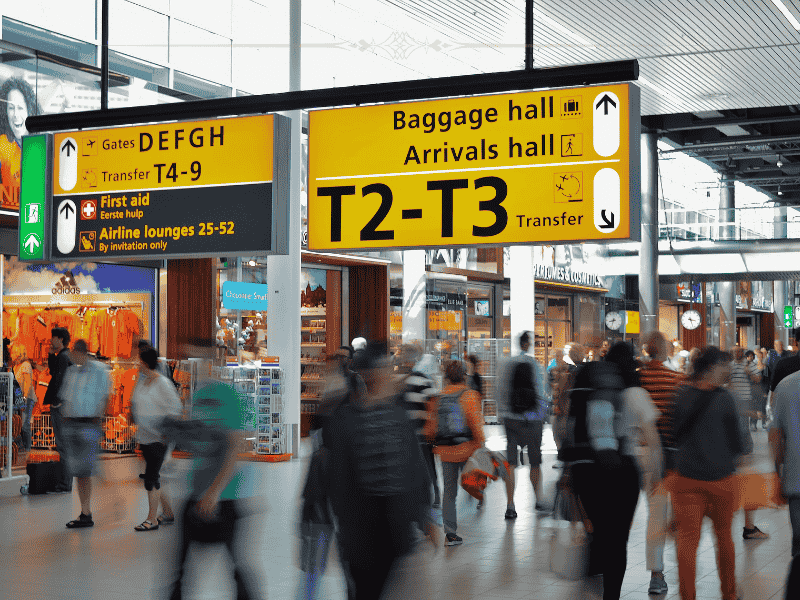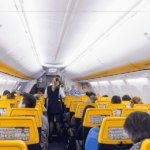A US airline has implemented one of the aviation industry’s strictest passenger appearance policies, expanding its regulations to cover not only clothing but also visible tattoos. The new policy, which took effect on January 22, 2025, grants the airline broader authority to deny boarding to passengers based on their attire or body art, marking a significant shift in how U.S. carriers manage passenger appearance.

Unprecedented Policy Change Raises Eyebrows
The policy update arrives amid growing tensions between airlines and passengers over appropriate dress standards. Under the new guidelines, Spirit Airlines can now refuse service to passengers wearing see-through clothing that exposes private areas, including breasts and buttocks. The regulations also explicitly prohibit barefoot passengers, a common policy among airlines, but notably extend to visible tattoos deemed offensive – a restriction rarely seen in commercial aviation.
Recent incidents have highlighted the challenges airlines face in managing passenger appearance. In October 2024, two passengers were removed from a Spirit flight for wearing crop tops, while just last week, a Texas man was escorted off a plane for wearing what the airline considered an offensive hoodie. Even after the passenger complied by removing the garment, he was still required to leave the aircraft, highlighting the airline’s strengthened stance on enforcement.
Passenger Response
The aviation industry has responded with mixed reactions to Spirit’s bold move. While some carriers watch closely to evaluate similar policy implementations, others maintain their traditional, less restrictive approach to passenger dress codes. Industry analysts suggest this could create a new standard for budget airlines seeking to reshape their image and passenger experience.
Travel advocacy groups have raised concerns about the subjective nature of determining what constitutes “offensive” tattoos or inappropriate clothing. The lack of clear, objective criteria could lead to inconsistent enforcement and potential discrimination claims, they argue. Questions remain about how Spirit will handle cultural differences in dress and religious expression under the new policy.
Spirit’s front-line staff now face the complex task of enforcing these expanded regulations. Gate agents and flight attendants must make quick decisions about passenger compliance, potentially leading to delayed departures and increased confrontations at boarding gates. The airline has reportedly initiated specialized training programs to help staff navigate these sensitive situations.
The policy’s implementation has already affected daily operations. Reports from major hubs indicate increased pre-boarding discussions between staff and passengers about attire requirements. Some travelers have been forced to purchase additional clothing at airport shops or cover tattoos to comply with the new standards.
Legal and Consumer Rights Implications
Consumer rights attorneys have begun examining the policy’s legal implications, particularly regarding the airline’s expanded authority to deny service based on appearance. While airlines have historically maintained broad discretion in refusing transport for safety or operational reasons, the inclusion of tattoos as grounds for denial presents new legal territory.
The U.S. Department of Transportation has not yet commented on Spirit’s policy update, though industry experts anticipate potential regulatory scrutiny, especially regarding discrimination concerns and passenger rights. The policy’s implementation raises questions about the balance between airline authority and passenger civil liberties.
Spirit Airlines’ decision carries significant business implications. As a budget carrier known for no-frills service, this move appears to be part of a broader strategy to reposition its brand image. However, the stricter regulations could alienate certain customer segments and potentially impact booking numbers.
Financial analysts are closely monitoring the policy’s effect on Spirit’s market share and customer satisfaction metrics. Early data suggests mixed consumer reaction, with some passengers applauding the emphasis on decorum while others vow to choose alternative carriers.
Social Media and Public Reaction
The announcement has sparked intense debate across social media platforms, with hashtags related to Spirit Airlines trending as passengers share experiences and opinions. Some users have posted photos of acceptable versus unacceptable attire, creating informal guides for fellow travelers.
Travel influencers and consumer advocates have begun documenting their experiences with the new policy, sharing stories of enforcement inconsistencies and suggesting ways for passengers to ensure compliance. These social media discussions have contributed to broader conversations about personal freedom, corporate policy, and social norms in public spaces.
As Spirit Airlines navigates the implementation of these new standards, other carriers are watching closely. The policy could mark the beginning of a broader industry shift toward more regulated passenger appearance standards, particularly among budget airlines seeking to modify their image and customer base.
However, competing airlines have thus far been hesitant to follow suit, instead emphasizing their more relaxed approach to passenger attire as a competitive advantage. This divergence in policy approaches could reshape market dynamics within the budget airline sector.
The long-term success of Spirit’s stricter standards will likely depend on several factors: consistent enforcement, clear communication with passengers, and the airline’s ability to maintain efficient operations while implementing these new rules. As the policy takes effect, its impact on the airline industry and passenger experience continues to unfold.




